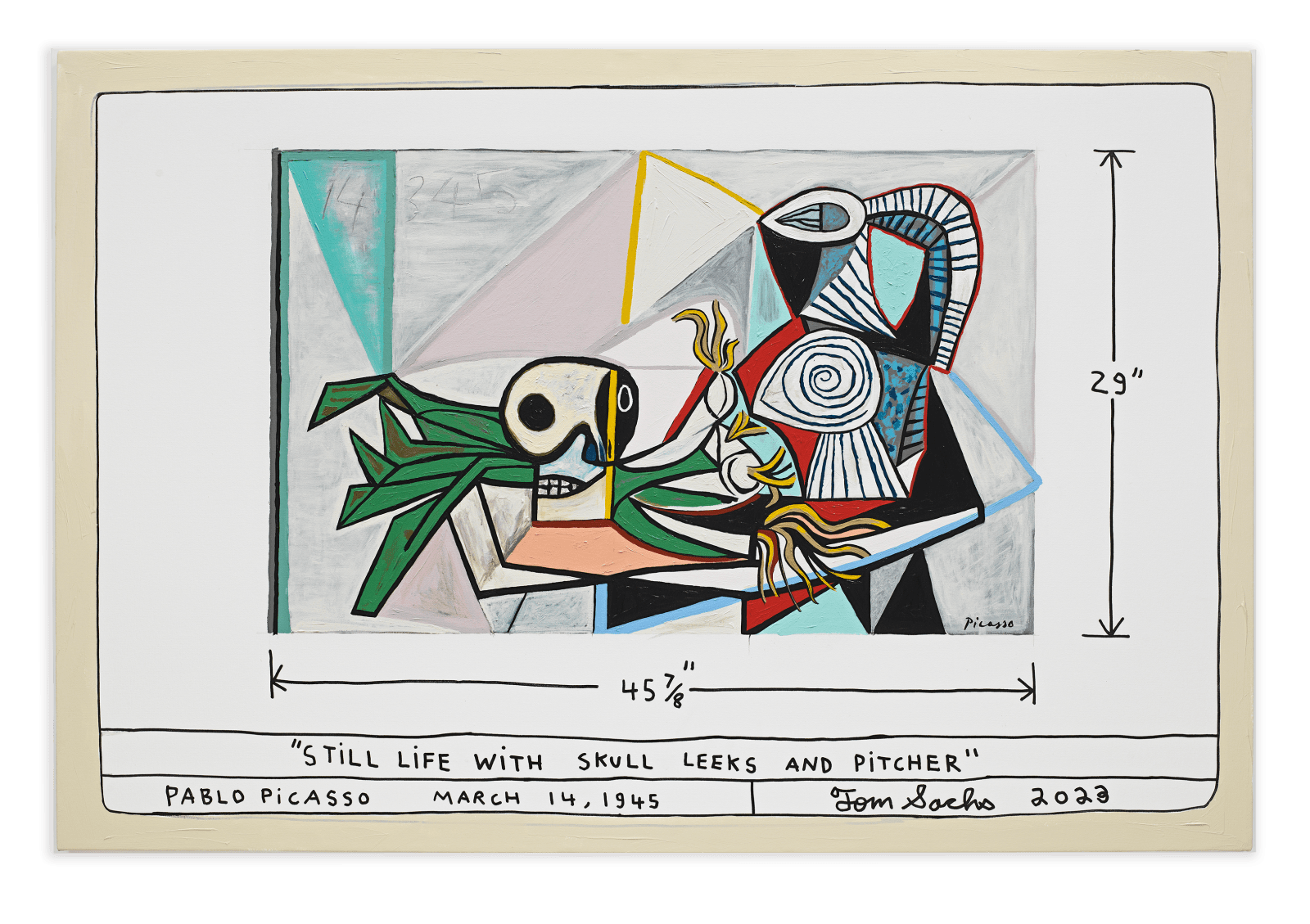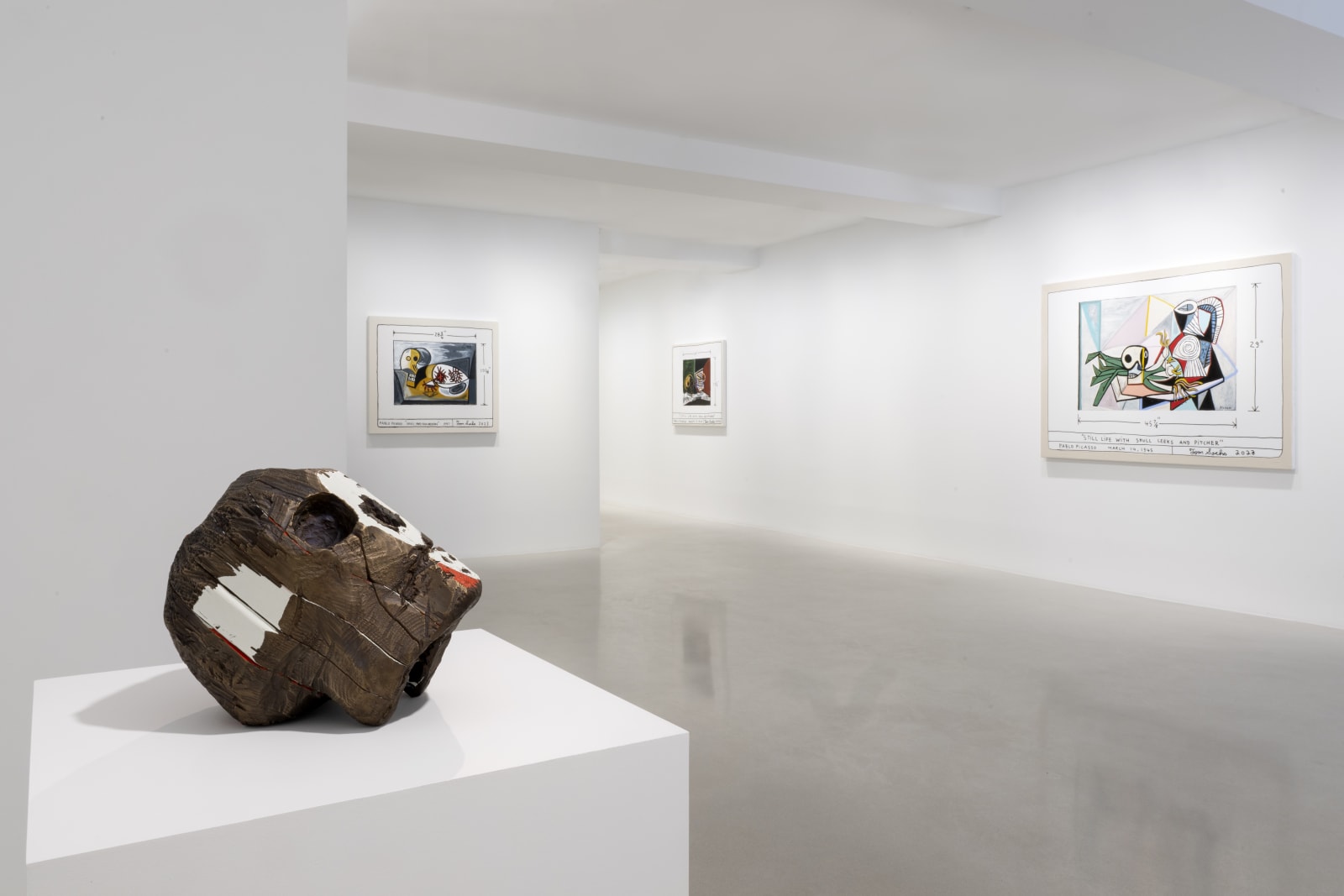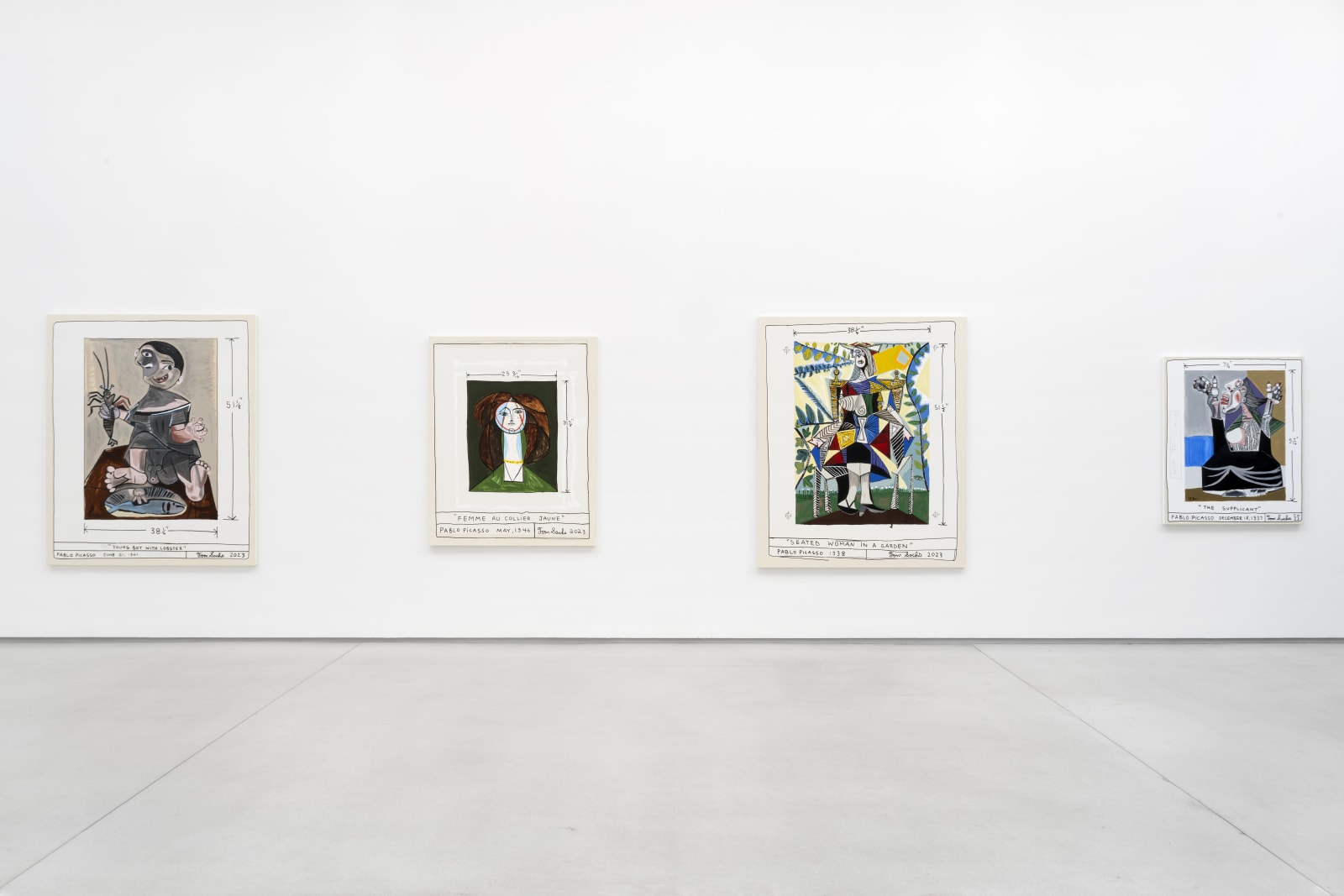Sachs also challenges Picasso by contrasting him with two opponents: longstanding rival Marcel Duchamp and a more contemporary adversary, Lisa Simpson. This exhibition brings Sachs’s reinterpretations of Picasso, Duchamp and Simpson’s works into conversation to create a wry reflection on the purpose of painting.
If you want to learn how to paint, start by painting your own Picasso. — Tom Sachs

Exploring the lines and forms used by Picasso in the Spanish painter’s lesser-known works created starting in 1937, Sachs found parallels with his own practice. The thick lines that recur in Sachs’s work, originating from the influence of American graffiti and street art, mimic the solid black linework that delineates many of Picasso’s figures.
Tom SachsSeated Woman, 2023
Synthetic polymer and Krink on canvas
101.6 x 76.2 cm (40 x 30 in)

Sachs’s choice of the works he would reimagine for the exhibition reflects many of the notions he discovered in Picasso’s works that vibrantly resonated in a contemporary context.

Exploring the lines and forms used by Picasso in the Spanish painter’s lesser-known works created starting in 1937, Sachs found parallels with his own practice. The thick lines that recur in Sachs’s work, originating from the influence of American graffiti and street art, mimic the solid black linework that delineates many of Picasso’s figures.
Tom Sachs
Still Life with Skull and Three Sea Urchins, 2023
Synthetic polymer and Krink on canvas
101.6 x 121.9 cm (40 x 48 in)




Each Picasso work is recreated true to scale. Sachs credits them to Picasso using their original dates and titles, while also adding a new frame around them and his own signature in his characteristic black brushwork — additions that allow him to recontextualise them and make them his own. The traces of each work’s creation, meanwhile, are left apparent, with measurement lines erased and repainted. By making visible the construction processes of the artworks he recreates, the artist invites the viewer to examine their own relationship to art-historical artefacts.
Tom Sachs
First Steps, 2023
Acrylic and Krink on canvas
182.9 x 152.9 cm (72.01 x 60.2 in)
First Steps, 1943
Oil on canvas
130.2 x 97.1 cm (51 1/4 x 38 1/4 in)




Tom Sachs































































































































































































